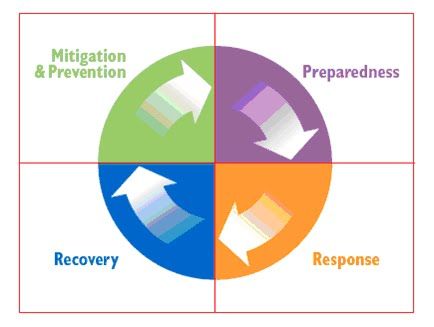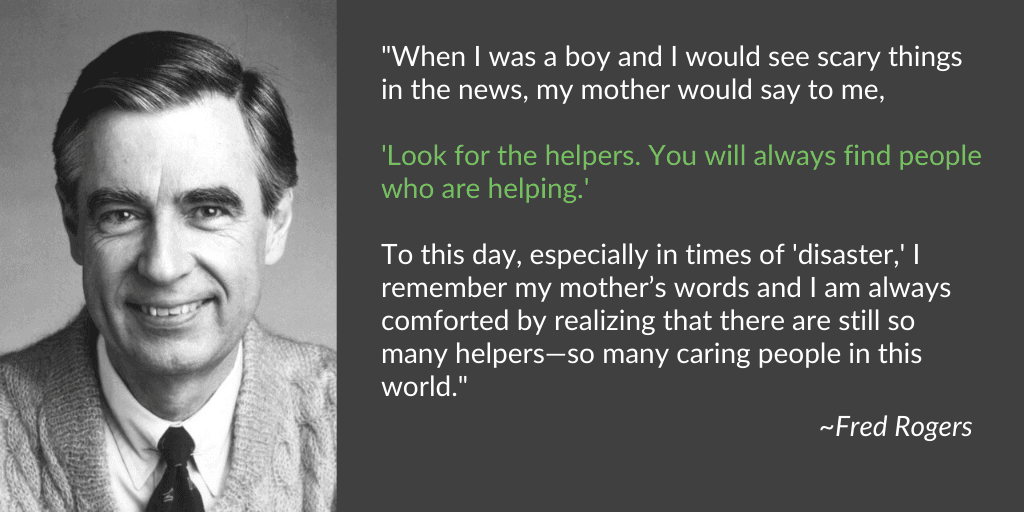The 4 Key Steps for a Crisis Management Plan
While we may not be able to foresee a coming crisis, we can overcome it with the right preparation and handling of the situation. This isn’t something we typically think about on a regular basis (or likely even want to think about) but by making this a regularly scheduled agenda item at staff meetings or planning meetings, it will become second-nature and ensure everyone is prepared should the worst happen.
 Don't worry about creating the "perfect" plan. No matter how much time you spend, these events will always throw something at us we never anticipated. Who would have thought a virus could shut down the entire world? The important thing is to at least get a basic plan in place and consider the critical elements:
Don't worry about creating the "perfect" plan. No matter how much time you spend, these events will always throw something at us we never anticipated. Who would have thought a virus could shut down the entire world? The important thing is to at least get a basic plan in place and consider the critical elements:
Emergency plan - This will help you prepare the supplies, materials and procedures you'd need in the event of an emergency. Creating an emergency plan requires a lot of “what if” thinking and preparing. Consider the different types of crises you may encounter. Each one would require a different response and likely different resources. Your state licensing agency likely has specific requirements to prepare for emergencies as well.
In the event of a natural disaster, supplies such as food, water and medical supplies will be critical. Depending on the severity and range of the issue, you may need to think about meeting the needs of your children and staff for a longer period of time. This not only requires being prepared with specific supplies and materials for survival but also having plans for the business, as described below. Because of the complexity of needs for various disasters and specific state requirements, please refer to our courses on disaster preparedness and the links at the end of this course for detailed information about how to be prepared for a emergency.
Business continuity plan – How will your business continue? Who is in charge and making decisions? How will you manage all your records and files? A continuity plan should address how the business will move forward during a crisis.
Consider the children, staff, families, facilities, supplies and materials and your intellectual property (records and files). Be prepared to manage these during a crisis. For example, if a fire destroyed the computers, how would you recover your records?
Your business insurance agent can often help with continuity planning. These are often things no one thinks about until a crisis hits and may be things that are unrecoverable if not properly managed.
Communication plan - To say that it would be impossible to overcommunicate during crisis would probably be an understatement. Think about how we all felt during the COVID crisis: scared, uncertain, frustrated. Even if you don’t have all the answers, honest and open communication can still be very comforting.
Your communication plan should address all stakeholders:
- Children
- Staff/Organization
- Families (existing and new potentials)
- Community
The plan should include the type and frequency of communications. What needs to go to the families and how often? How do we keep in touch with our staff? How do we let new families know about the status of our business? Utilize technology to help you. Tools as simple as email, group text, social media and many apps can help streamline communication.
Be open and honest about the situation. People realize we may not always have the answer to every question but they like to know what is happening and what they can expect. Continue to communicate throughout the situation and keep stakeholders in the loop as appropriate.
Keep in mind that children’s needs will be different. Communicate what is age appropriate and be available to them as they process the situation. They need to know that adults will keep them safe and will provide for their needs.
Recovery plan - Finally, you’re out of the crisis and on the way to rebuilding! What does that look like? Your business may need to adapt to a new environment. Depending on the scope of the crisis, you may face different elements of recovery:
Physical – there may be structural issues to address with the facility. How would you handle major damage to your building?
Financial – does insurance cover the damage? How do you rebuild your finances?
Reputational – what caused the issue and how do you regain the trust of families and the community?
Emotional – you many need to address emotional trauma as well, with the children, staff and families.
As you can see, the planning process can be rather intense but don’t put it off just because it seems overwhelming. Take one step at a time and build out each plan as completely as possible. Most importantly, once it’s done, don’t put it on a shelf to gather dust. Bring it out and review often. Even the best plans are useless if they are not followed.
